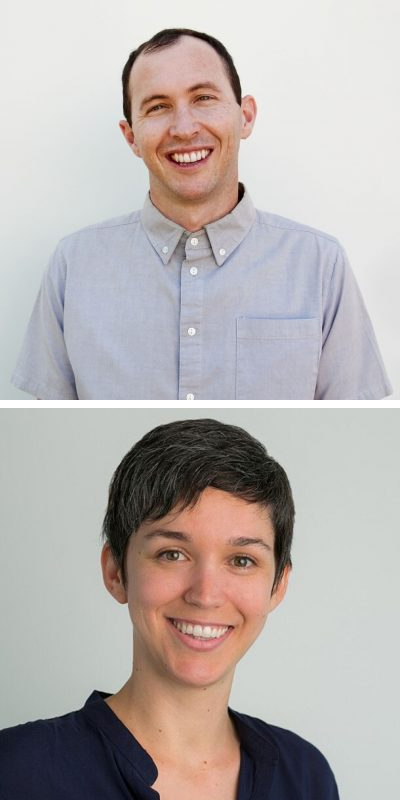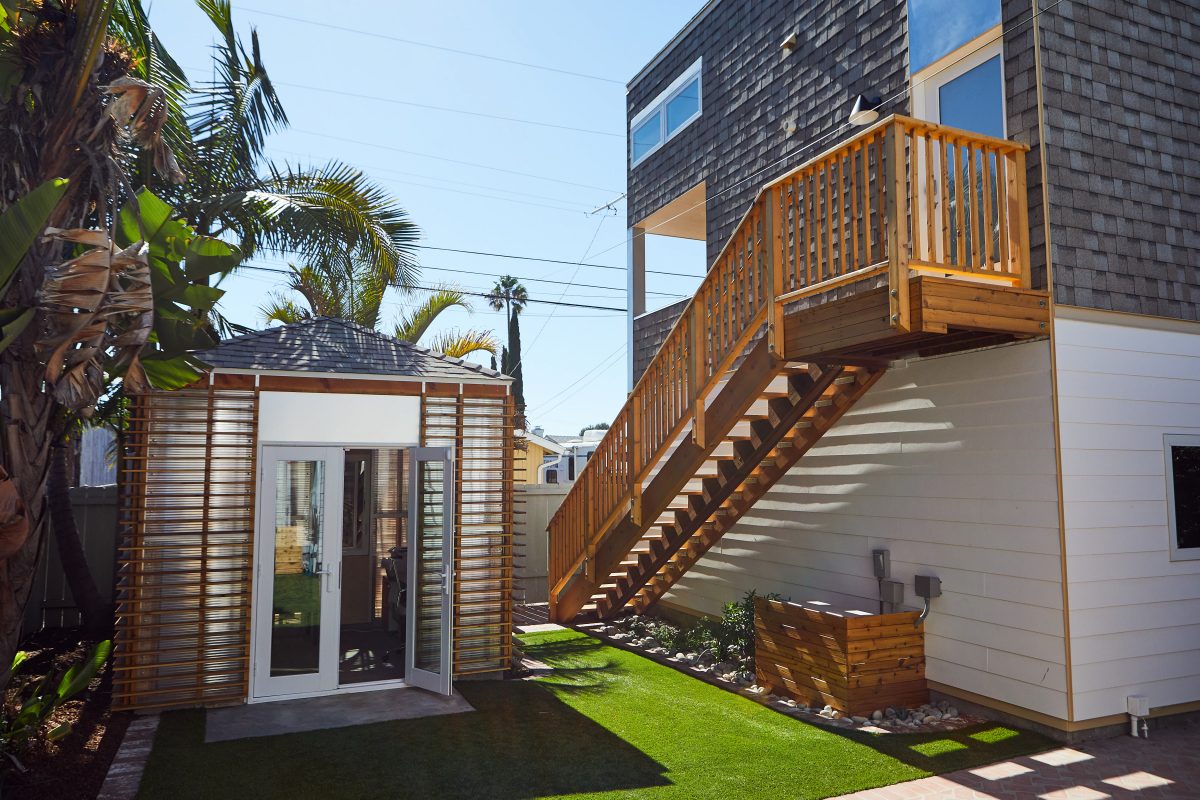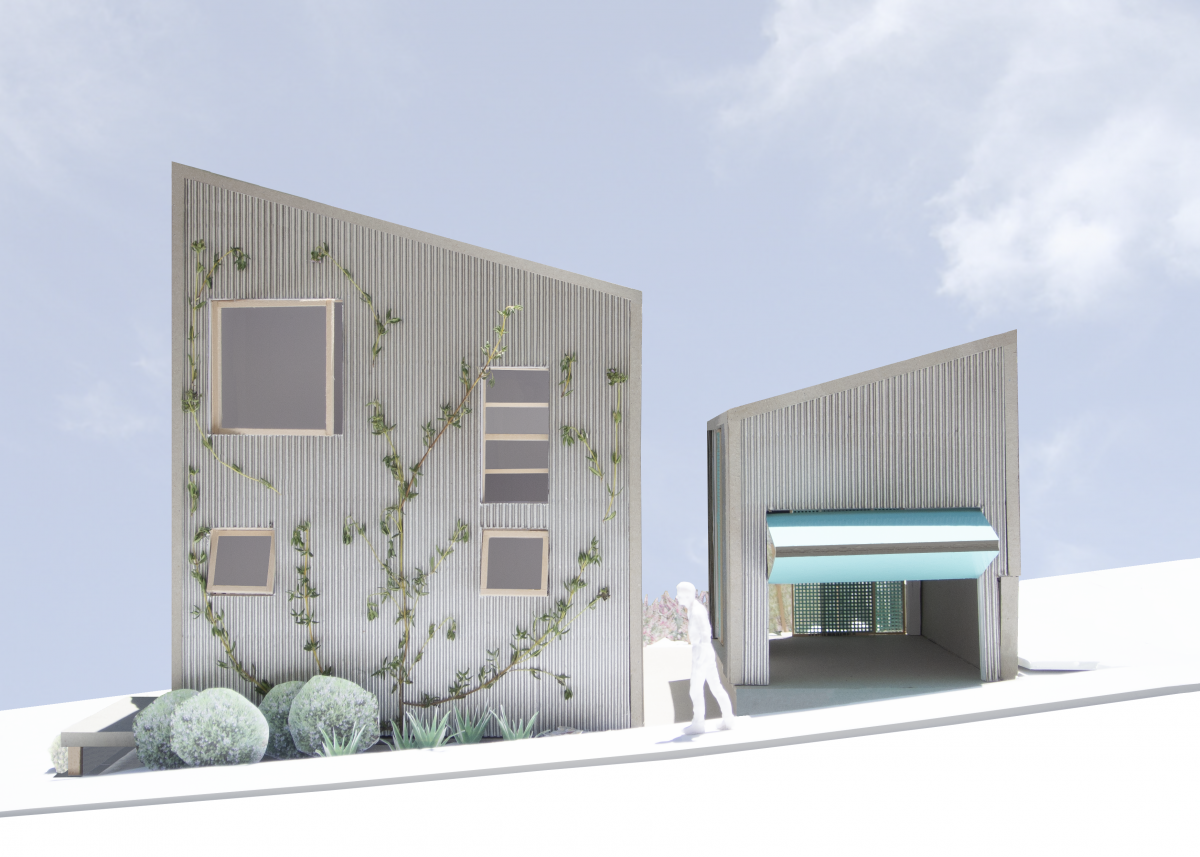David and Mikaela Pearson on Designing for Resilient Futures
Faculty members David and Mikaela Pearson work across design and culture. Together they founded PALO in 2015 as a place to build an integrated architecture, landscape & development firm. David has experience at a range of offices, from a design build firm to working as a project architect specializing in the design and development of theaters and lecture halls. Mikaela has worked on projects from rural housing to urban open space with a research background in storm water filtration, subterranean root systems and urban wilds. We recently caught up with David and Mikaela to discuss their different professional paths, as well as how their work is grounded in designing for more resilient futures.
Interview with David and Mikaela Pearson
Why did you choose to study architecture and landscape architecture?
 David: Growing up in San Diego County I started by building bike jumps and advanced into projects that required craft and three-dimensional development. I worked my way through community college glassing surfboards. The act of building a surfboard is great because the board’s performance can be directly tested in the water. But resin is toxic, so I knew I needed to find a way to practice craft and design that was both safer and more diverse.
David: Growing up in San Diego County I started by building bike jumps and advanced into projects that required craft and three-dimensional development. I worked my way through community college glassing surfboards. The act of building a surfboard is great because the board’s performance can be directly tested in the water. But resin is toxic, so I knew I needed to find a way to practice craft and design that was both safer and more diverse.
Mikaela: I had a really free childhood. I spent a lot of time wandering through the desert with my dog and going on long summer trips with my family. This provided a great juxtaposition between the monumental aggregate of architecture and the intricate complexity of natural systems. I loved studying architecture as an undergrad, but as I went into practice I felt like I could answer many questions asked of architects with landscape. There is so much energy that goes into the making of a building. If I could pull some of that program outside it made sense to do so.
This inherent interest in the craft of functional pieces and the diffusion of program into the landscape has become a central interest in our design thinking.
You have a diverse background as professors and designers. What do you believe is the relationship between academia and practice?
Engaging with both academia and practice allows us to engage with different aspects of design. It is easy to fall into the day to day minutiae of running a small practice. That can be detrimental to the creativity of the practice. Academia is necessary for a curiosity-led research process. The one thing we ask of both our own work and the students’ work is, “What would be the absurd solution?” We all move through the world with so many innate assumptions that what starts out as a ridiculous idea often evolves into a fresh perspective. A rigorous academic pursuit—leaving behind a few of the practical considerations—is an exercise in diverse perspective invaluable to practice.
Working and living in San Diego, how does the city shape your practice and teaching?
When we go out of town, the topography of San Diego is what welcomes us back first. The repetition of mesa, canyon, lagoon provides a physical cue that we are coming home. The experiential impact of this is a constant change of visual perspective. Constant reorientation is one manifestation of the embodied diversity of San Diego.
The best parts of San Diego are where this diversity is seen socially and culturally as well. The distinct neighborhoods with a strong sense of community provide a rhythm to the environment. The topographic conditions encourage this rhythm, prohibiting San Diego from being a continuous, undifferentiated grid.
The life that has grown up in different communities contrasts with the massive institutions that are part of the city as well. You can’t think about San Diego without the naval shipyards, military bases, airport. We live in a city that is divided by massive nonpublic zones.
We want to push back on the impenetrability of buildings and sites. In our practice we seek a discrete solution—something that becomes permeable to site and utilizes the landscape as the connective tissue.
With changes in climate, technology, and construction techniques, how do you think designers will adapt ways of practicing to advance the profession?
We hope everyone functions as idealistic optimists. The only way to change things for the better is to believe that they will change for the better and to act on that assumption. We already have so much knowledge about how to make a more equitable, healthy, complex world—we need to apply that knowledge. Part of that in practice goes back to challenging our assumptions and looking at a project from a more comprehensive perspective.
What projects have you enjoyed working on most in your careers?
Projects that serve the public and serve a wider purpose are the most engaging. Life is about encountering the unexpected and appreciating change. Despite being a young practice with limited opportunity to work on explicit public work like schools or plazas—we begin each project by asking what is the critical territory of the site? You cannot answer that without extending beyond the property lines of a site and engaging the public, private and networked realms.
What advice would you give to students who aspire to follow a similar career path?
We are all in this for the long game. It is a test of endurance with the highest stakes imaginable, but incremental improvements do make a difference. Be endlessly curious. Be endlessly hopeful. Be an advocate for the best world imaginable.
What three words would you use to describe Woodbury?
Local. Friendly. Entrepreneurial.


